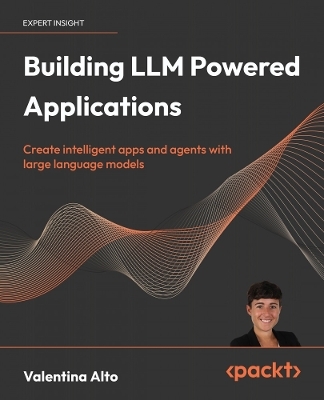
Building LLM Powered Applications
Packt Publishing Limited (Verlag)
978-1-83546-231-7 (ISBN)
Key Features
Embed LLMs into real-world applications
Use LangChain to orchestrate LLMs and their components within applications
Grasp basic and advanced techniques of prompt engineering
Book DescriptionBuilding LLM Powered Applications delves into the fundamental concepts, cutting-edge technologies, and practical applications that LLMs offer, ultimately paving the way for the emergence of large foundation models (LFMs) that extend the boundaries of AI capabilities.
The book begins with an in-depth introduction to LLMs. We then explore various mainstream architectural frameworks, including both proprietary models (GPT 3.5/4) and open-source models (Falcon LLM), and analyze their unique strengths and differences. Moving ahead, with a focus on the Python-based, lightweight framework called LangChain, we guide you through the process of creating intelligent agents capable of retrieving information from unstructured data and engaging with structured data using LLMs and powerful toolkits. Furthermore, the book ventures into the realm of LFMs, which transcend language modeling to encompass various AI tasks and modalities, such as vision and audio.
Whether you are a seasoned AI expert or a newcomer to the field, this book is your roadmap to unlock the full potential of LLMs and forge a new era of intelligent machines.What you will learn
Explore the core components of LLM architecture, including encoder-decoder blocks and embeddings
Understand the unique features of LLMs like GPT-3.5/4, Llama 2, and Falcon LLM
Use AI orchestrators like LangChain, with Streamlit for the frontend
Get familiar with LLM components such as memory, prompts, and tools
Learn how to use non-parametric knowledge and vector databases
Understand the implications of LFMs for AI research and industry applications
Customize your LLMs with fine tuning
Learn about the ethical implications of LLM-powered applications
Who this book is for Software engineers and data scientists who want hands-on guidance for applying LLMs to build applications. The book will also appeal to technical leaders, students, and researchers interested in applied LLM topics.
We don’t assume previous experience with LLM specifically. But readers should have core ML/software engineering fundamentals to understand and apply the content.
After completing her bachelor's degree in finance, Valentina Alto pursued a master's degree in data science in 2021. She began her professional career at Microsoft as an Azure Solution Specialist, and since 2022, she has been primarily focused on working with Data & AI solutions in the Manufacturing and Pharmaceutical industries. Valentina collaborates closely with system integrators on customer projects, with a particular emphasis on deploying cloud architectures that incorporate modern data platforms, data mesh frameworks, and applications of Machine Learning and Artificial Intelligence. Alongside her academic journey, she has been actively writing technical articles on Statistics, Machine Learning, Deep Learning, and AI for various publications, driven by her passion for AI and Python programming.
Table of Contents
Introduction to Large Language Models
LLMs for AI-Powered Applications
Choosing an LLM for Your Application
Prompt Engineering
Embedding LLMs within Your Applications
Building Conversational Applications
Search and Recommendation Engines with LLMs
Using LLMs with Structured Data
Working with Code
Building Multimodal Applications with LLMs
Fine-Tuning Large Language Models
Responsible AI
Emerging Trends and Innovations
| Erscheinungsdatum | 04.11.2023 |
|---|---|
| Verlagsort | Birmingham |
| Sprache | englisch |
| Maße | 191 x 235 mm |
| Themenwelt | Mathematik / Informatik ► Informatik ► Office Programme |
| Informatik ► Theorie / Studium ► Künstliche Intelligenz / Robotik | |
| ISBN-10 | 1-83546-231-6 / 1835462316 |
| ISBN-13 | 978-1-83546-231-7 / 9781835462317 |
| Zustand | Neuware |
| Haben Sie eine Frage zum Produkt? |
aus dem Bereich


